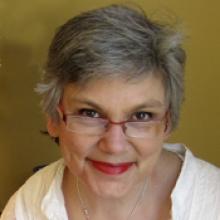Each year, Blarney Books and Art in Port Fairy, Victoria, Australia hosts a major competition and exhibition of art made from books. Rita Summers, who was the only Tasmanian entrant this year, submitted Agatha’s Wardrobe, a mixed media artwork incorporating pages from an 1835 publication entitled Agatha’s Husband.
 Rita’s entry, described by the judges as a ‘very subtle and emotional piece’, was awarded the grand prize of $1,500. Blarney Books and Art have also purchased Rita’s winning entry for their permanent collection.
Rita’s entry, described by the judges as a ‘very subtle and emotional piece’, was awarded the grand prize of $1,500. Blarney Books and Art have also purchased Rita’s winning entry for their permanent collection.
Art is a way of life for Rita, as can be seen from her original poem, included with her entry:
art is like breathing to me
life and thoughts impressed on paper, cloth, the air
fleeting sounds and images
captured before they escape forever
Rita explains, ‘I like to push the boundaries in my art to create my own original style. My qualifications and background focus on visual contemporary art, craft and design, and stitching is my chosen medium. I often incorporate upcycled materials and found objects. I like to combine a mix of artistic processes: stitching, photography, digital manipulation, printmaking, collage, sculpture, painting, drawing and books or text.’
Agatha’s Wardrobe represents the hopes and dreams of a young woman from the 1800’s as she prepares for her wedding: the shy delight she feels as she chooses her trousseau; the stitching of precious silks and laces for her ‘hope chest’ or ‘glory box’ (probably begun while she was still a child); the anticipation as she tries on her wedding dress; the mystery and uncertainty of love and its passions; the solemnity of the marriage vows.
Love makes us vulnerable to pain, as Agatha discovers. Rita experienced this with her as she read the book and created this artwork. She felt Agatha’s pain as she faced loss, betrayal, isolation, and a deep despair which almost drove her to suicide. Ultimately, love triumphed, but not before it almost destroyed both her and her husband.
There are twelve dresses in the box – a dress for each month of the year. Each dress has a swing label attached to it; each label features a phrase from the traditional marriage vows.
 Rita added a key to the box lid as both a symbolic and practical embellishment – ‘the key to my heart’; the key which makes precious items secure; the key which keeps things private.
Rita added a key to the box lid as both a symbolic and practical embellishment – ‘the key to my heart’; the key which makes precious items secure; the key which keeps things private.
Safety pins and buttons – again, both practical and symbolic. Hand crocheted lace, vintage (torn) silk, stitching – everything is given a hidden meaning beyond their intrinsic beauty and structure.
Things hinted at and not always explained. Materials and skills which women have implemented through the ages.
In transforming the original book into something beyond the printed word, Rita hopes that Agatha’s Wardrobe touches the hearts of everyone who sees and absorbs what it has become.
Materials: mixed media – wood, cardboard, vintage silk, found objects, specialty paper, old book pages, old sheet music, vintage lace, buttons, vintage key, dressmaker pattern tissue, stitch
Rita Summers is co-owner and operator of Gone Rustic Studio & Gallery, situated in Tasmania, Australia.
To find out more about Rita and to see more of her art, you can visit her blog at www.gonerustic.com, or her Facebook page www.facebook.com/gonerusticstudiogallery.
0.000000
0.000000














































